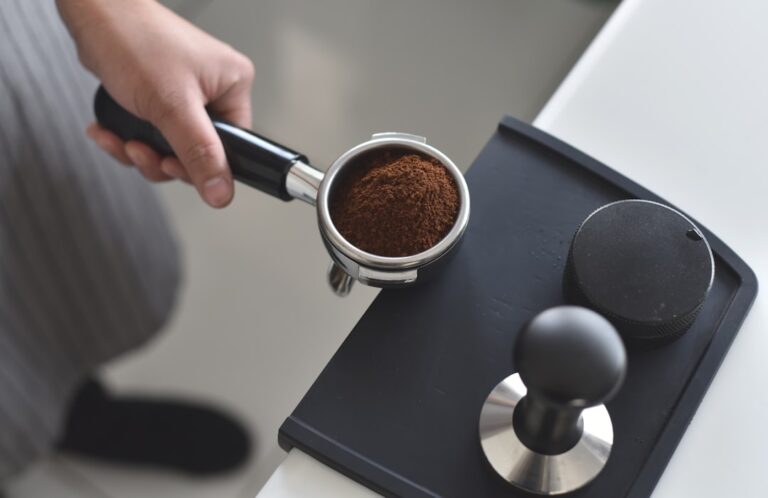Beat the Heat: Simple Tricks to Keep Your House Cool in Summer

As summer approaches, maintaining a cool and comfortable home becomes increasingly important. High indoor temperatures can lead to discomfort and pose health risks such as heat exhaustion and heat stroke, particularly for vulnerable individuals like the elderly, children, and those with certain medical conditions. Excessive heat can also negatively impact productivity and sleep quality, affecting overall well-being.
Keeping a house cool during summer months offers both health and financial benefits. Implementing strategies to reduce indoor temperatures can lower energy bills by decreasing air conditioning usage. This not only results in cost savings but also reduces environmental impact through decreased energy consumption.
Maintaining a cool home during summer is therefore essential for physical well-being, financial stability, and environmental responsibility.
Key Takeaways
- Keeping your house cool in summer is important for comfort and energy efficiency.
- Utilize natural ventilation by opening windows strategically to maximize airflow.
- Choose the right window treatments such as blinds or curtains to block out the sun’s heat.
- Use fans effectively by positioning them to create a cool breeze indoors.
- Manage your thermostat to set the right temperature for comfort and energy savings.
- Reduce heat-generating activities indoors to minimize additional heat.
- Incorporate greenery in your home to naturally cool your living space.
Utilizing Natural Ventilation: Tips for Maximizing Airflow
Creating a Cross Breeze
One of the most effective ways to keep your house cool in the summer is by maximizing natural ventilation. Opening windows and doors strategically can create a cross breeze that helps to circulate air throughout your home, reducing the need for artificial cooling methods. To maximize airflow, consider opening windows on opposite sides of your home to encourage cross ventilation.
Utilizing Window Vents and Fans
Additionally, installing window vents or using window fans can help to draw in cooler air from outside while expelling hot air from inside. This can be a great way to supplement your natural ventilation strategy and keep your home cool.
Taking Advantage of Cooler Evening Temperatures
Another way to utilize natural ventilation is by taking advantage of cooler evening temperatures. In the evening, when outdoor temperatures drop, open windows to allow cool air to flow into your home. This can help to lower indoor temperatures and create a more comfortable sleeping environment. In the morning, before the outdoor temperatures rise, close windows and use shades or blinds to block out the sun’s heat and trap the cooler air inside.
By strategically using natural ventilation, you can effectively cool your home without relying solely on air conditioning.
Choosing the Right Window Treatments: Blocking Out the Sun’s Heat

Selecting the right window treatments can play a significant role in keeping your house cool during the summer months. Sunlight streaming through windows can significantly increase indoor temperatures, making it more difficult to maintain a comfortable living environment. To combat this, consider using window treatments such as blinds, shades, or curtains to block out the sun’s heat during the hottest parts of the day.
Look for window coverings with a high reflective value or a tight weave that can effectively reduce solar heat gain. In addition to blocking out direct sunlight, choosing window treatments with light colors can also help to reflect heat away from your home. Light-colored blinds or curtains can prevent heat from being absorbed into your living space, helping to maintain cooler indoor temperatures.
For maximum effectiveness, consider installing window treatments on all windows that receive direct sunlight, especially those facing south or west where the sun’s rays are strongest. By choosing the right window treatments, you can significantly reduce the amount of heat that enters your home, making it easier to keep your living space cool and comfortable.
Using Fans Effectively: Creating a Cool Breeze Indoors
| Technique | Effectiveness | Energy Consumption |
|---|---|---|
| Ceiling Fans | Effective for circulating air in a room | Low energy consumption |
| Oscillating Fans | Good for creating a breeze in a specific area | Moderate energy consumption |
| Box Fans | Useful for circulating air in a larger space | Higher energy consumption |
Fans are a cost-effective and energy-efficient way to cool your home during the summer months. By creating a breeze, fans can help to lower perceived temperatures and make your living space more comfortable without relying solely on air conditioning. To use fans effectively, consider placing them strategically throughout your home to promote airflow.
Ceiling fans can be particularly effective at circulating air and creating a cooling effect, especially when used in conjunction with open windows to encourage cross ventilation. In addition to ceiling fans, portable fans can also be used to create a cool breeze indoors. Placing fans near windows or doors can help to draw in cooler air from outside while expelling hot air from inside.
Additionally, using fans in combination with air conditioning can help to distribute cooled air more evenly throughout your home, reducing the need for excessive cooling. By using fans effectively, you can create a more comfortable living environment while reducing your reliance on energy-intensive cooling methods.
Managing Your Thermostat: Setting the Right Temperature for Comfort
Properly managing your thermostat is essential for keeping your house cool during the summer while also minimizing energy consumption. Setting your thermostat to an appropriate temperature can help to maintain a comfortable living environment without overworking your cooling system. The U.S. Department of Energy recommends setting your thermostat to 78°F (26°C) when you are at home and adjusting it higher when you are away or asleep to save on cooling costs. To further optimize your thermostat settings, consider investing in a programmable thermostat that allows you to schedule temperature adjustments based on your daily routine. This can help you avoid unnecessary cooling when you are not at home while ensuring that your living space is comfortable when you return. Additionally, using ceiling fans in conjunction with air conditioning can allow you to raise the thermostat setting by 4°F (2°C) without sacrificing comfort, further reducing energy consumption.
Reducing Heat-Generating Activities: Minimizing Indoor Heat

Common Culprits of Indoor Heat
Many everyday activities can contribute to increased indoor temperatures during the summer months. Cooking, using hot water, and running appliances such as dishwashers and dryers all generate heat that can make it more difficult to keep your house cool.
Adjusting Your Daily Routine
To minimize indoor heat, consider adjusting your daily routine to reduce heat-generating activities during the hottest parts of the day. For example, try cooking outdoors on a grill or using smaller appliances such as microwaves instead of ovens and stovetops.
Optimizing Hot Water Appliance Use
Additionally, consider using hot water appliances such as dishwashers and washing machines during cooler times of the day, such as in the evening or early morning. This can help to reduce the amount of heat that is generated inside your home while also lowering energy costs by taking advantage of off-peak electricity rates.
Maintaining Cooler Indoor Temperatures
By being mindful of heat-generating activities and adjusting your routine accordingly, you can help to maintain cooler indoor temperatures and reduce the need for excessive cooling.
Incorporating Greenery: Using Plants to Cool Your Home Naturally
Incorporating greenery into your home can not only enhance its aesthetic appeal but also help to naturally cool your living space during the summer months. Plants have a natural cooling effect through a process called transpiration, where they release water vapor into the air, creating a cooling effect similar to that of a natural evaporative cooler. By strategically placing plants throughout your home, you can take advantage of this natural cooling process to lower indoor temperatures.
In addition to their cooling properties, plants can also help to improve indoor air quality by removing pollutants and increasing oxygen levels. This can contribute to a healthier and more comfortable living environment while also reducing the need for artificial cooling methods. When selecting plants for your home, consider choosing varieties that are well-suited to indoor environments and require minimal maintenance.
By incorporating greenery into your home, you can take advantage of nature’s own cooling system while enhancing the overall comfort and livability of your living space. In conclusion, keeping your house cool during the summer months is essential for maintaining a comfortable living environment and promoting overall well-being. By utilizing natural ventilation, choosing the right window treatments, using fans effectively, managing your thermostat, reducing heat-generating activities, and incorporating greenery into your home, you can effectively lower indoor temperatures without relying solely on air conditioning.
These strategies not only help to keep you comfortable but also have financial and environmental benefits by reducing energy consumption and lowering utility costs. By taking proactive measures to keep your house cool in the summer, you can create a more sustainable and enjoyable living environment for yourself and your family.
If you’re looking for more life hacks for your home, check out this article on simple tricks to keep your house cool in summer. It offers great tips for maintaining a comfortable temperature in your home during the hot months.
FAQs
What are some simple tricks to keep your house cool in summer?
Some simple tricks to keep your house cool in summer include using curtains and blinds to block out the sun, using fans to circulate air, keeping windows and doors closed during the hottest part of the day, and using light-colored or reflective roofing materials.
How can curtains and blinds help keep a house cool in summer?
Curtains and blinds can help keep a house cool in summer by blocking out the sun and reducing the amount of heat that enters through windows. This can help lower the temperature inside the house and reduce the need for air conditioning.
Why is it important to keep windows and doors closed during the hottest part of the day?
It is important to keep windows and doors closed during the hottest part of the day to prevent hot air from entering the house and to keep cool air inside. This can help maintain a comfortable temperature and reduce the need for air conditioning.
How can fans help keep a house cool in summer?
Fans can help keep a house cool in summer by circulating air and creating a breeze. This can help lower the perceived temperature and make the house feel more comfortable without the need for air conditioning.
What are some tips for using roofing materials to keep a house cool in summer?
Some tips for using roofing materials to keep a house cool in summer include using light-colored or reflective materials that can reflect sunlight and reduce heat absorption. This can help lower the temperature inside the house and reduce the need for air conditioning.





